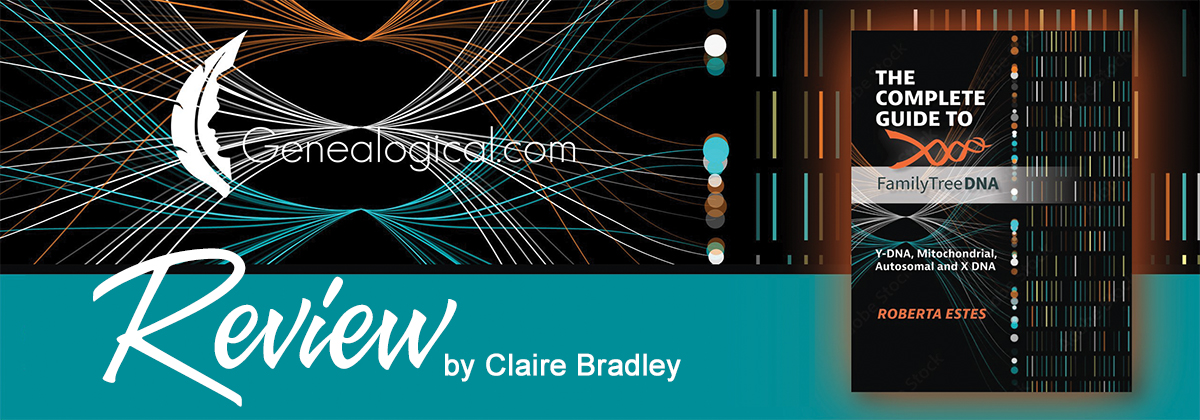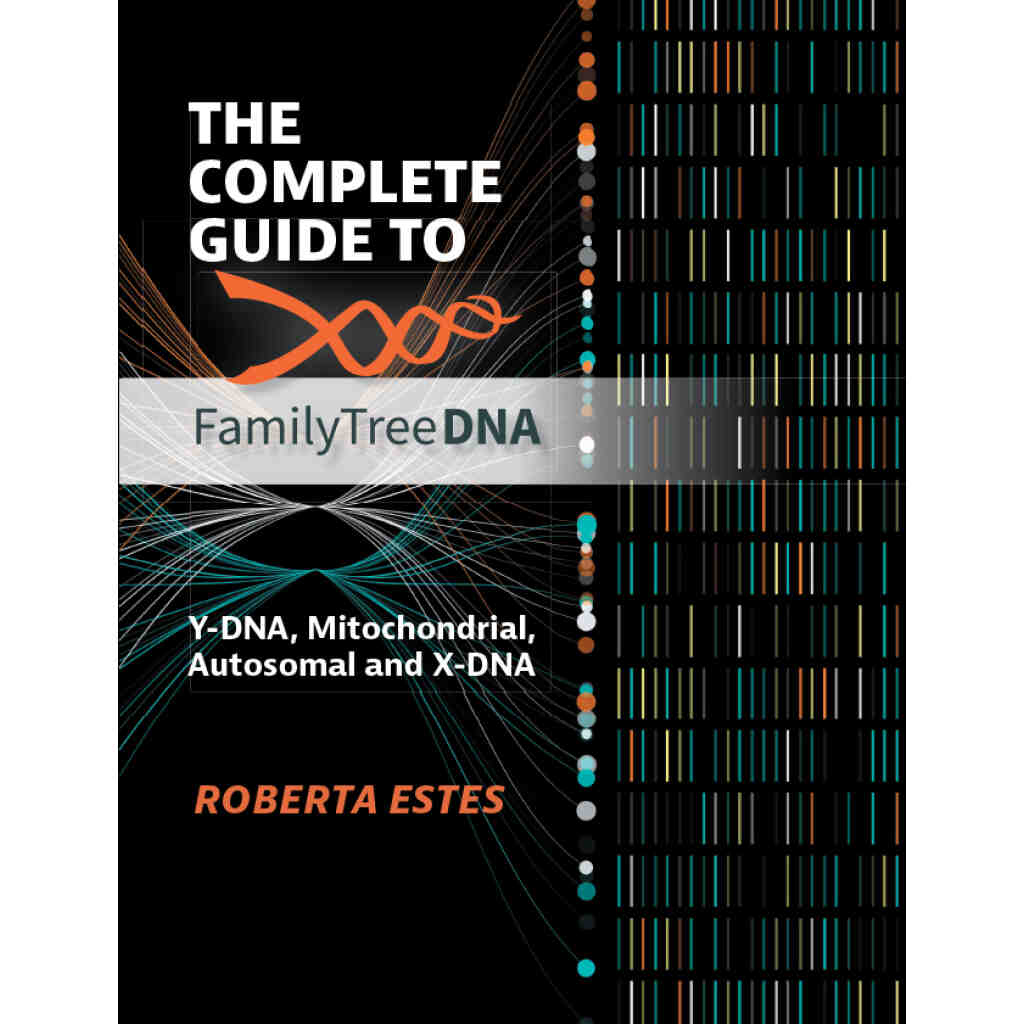
Claire Bradley is a Dublin-based genetic genealogist, who specializes in Irish ancestry. Ms. Bradley has been blogging for twelve years. On June 24, 2024, Claire posted the following review of Roberta Estes’ new book, The Complete Guide to Family TreeDNA: Y-DNA, Mitochondrial, Autosomal and X-DNA.
“The Complete Guide to Family Tree DNA
The moment I saw that Robert Estes had written a new book on Family Tree DNA, I knew I wanted to read it. So I was particularly delighted that Genealogical gave me a review copy for free.
Roberta Estes is a well-known DNA blogger. I’ve actually met her briefly a couple of times but I’ve been a subscriber to her newsletter for many years. She’s a great communicator and educator so she was a super choice to write this text book.
Family Tree DNA is your one-stop shop for DNA tests. As the only provider of mitochondrial tests, the biggest source of Y tests and one of the earliest databases of autosomal testers, all serious genealogists and family historians are using this company. I first tested my mother (atDNA), paternal uncle (Y) and paternal aunt (atDNA) with them in 2014 and have since expanded to many other family members. Most recently, I upgraded my brother’s test to a Big Y.
If you’re not sure what I’m talking about, then you want to read this book. Roberta takes the reader through the different types of DNA test available, with lots of graphics, and step by step guides. I learned lots from this book.
The bulk of it is devoted to Y-DNA, and a noticeably smaller amount goes on mitochondrial, autosomal and X-DNA. The section on ethnicity estimates has much less relevance for a European reader like me than a new world person. There is a chapter on projects, but I’d have liked to see much more on this, as it’s an area I find difficult to use, particularly as an administrator of a group. There’s also a chapter on third party tools, which feels a little out of place. DNA Painter is referenced but she just talks about the chromosome painting and not the magnificent WATO tool.
I read a physical copy of the book, which I much prefer as a reference tool. However, I was disappointed that the illustrations are all in black and white, when they would make more sense in colour. Clearly, the author was aware of this editorial choice in advance, because she does make reference to images appearing in “lighter grey” or similar in the text. That said, there are an impressive amount of screenshots, and it must have taken an eternity to block out the private data in each one! As an educator, I feel that pain. For best use, you’d probably want to have a physical and e-book version, as the footnotes are often link to Roberta’s blog, and it would be great click on those and go straight there.
I really feel this book is worth the time and money if you’re an FTDNA user at the moment. However, like all books on DNA, it’s going to be out of date pretty quickly, so I hope that there will be updated editions in the future, particularly if FTDNA changes their user interface (which does look a little old-fashioned right now).”




